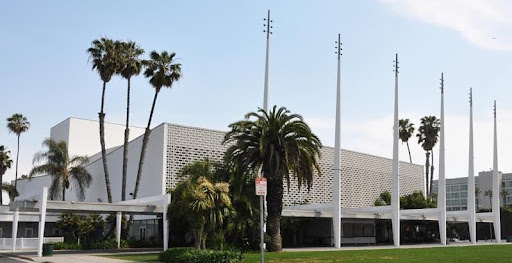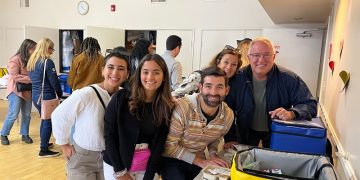When you walk down a street in Santa Monica, you can feel it. That quiet hum of history that lives in the old buildings: the Craftsman bungalows tucked behind flowering jacarandas, the Art Deco storefronts with their stubborn charm, the jockeying storefronts of Main Street even the weathered apartments that have seen generations of renters come and go. These buildings aren’t just “structures.” They’re memory keepers. And if we’re not careful, we’ll lose them.
Here’s the thing: cities like Santa Monica are constantly under pressure. Land close to the ocean is expensive, development is usually profitable, and shiny new projects always promise more tax dollars, with, of course, no adverse impact. You’ve already seen it: another oversized econo box going up where a proud streamline moderne building once stood. Sure, progress has its place, but history has its place, too. When everything inexorably becomes new, slick, profitable, and “efficient,” something essential gets erased.
Think of it this way. Imagine Santa Monica without the Georgian Hotel, without the Clock Tower, without the Pier’s carousel, without those Spanish Colonial courtyards where bougainvillea spills over white stucco walls. Suddenly, it’s not Santa Monica anymore. It could be Anywhere, USA.
And that’s the danger.
Older buildings anchor us. They remind us that this city has a story much bigger than ourselves and that the story started before us and will continue after us. They hold layers of time: grandparents taking first dates to old theaters, kids buying models at Evett’s Model Shop, do-it-yourselfers buying parts at Busy Bee, immigrants setting down roots in small apartment courts that still stand today. When you shop or dine on Main Street, you are not just spending money; you are actually walking through time. Tear those places down, and you’re not just losing square footage. You’re losing identity.
When we pass an old building with sagging beams, peeling paint, and think, “Eh, someone should knock that down.” But when you learn the important role that building played in our local history, or someone important lived there, or that it was built by a famous builder or developer, or architect, or that hundreds of famous performers played there, when you hear the backstory of that building, your perspective magically changes. Suddenly, the cracked stucco and sagging porch beams don’t look like junk. They look like evidence. Proof that people lived and loved and fought to belong here. And that’s why historic preservation matters.
Now, I get it. Some folks just roll their eyes. They say preserving old buildings is a luxury or that it gets in the way of progress. “Why cling to the past when we need more housing, more density, more modern everything?” It’s not an unreasonable question. But the choice isn’t binary.
Protecting history doesn’t mean freezing a city in amber. It means weaving the old into the new so we don’t forget who we are along the way. Today, our City is 150 years old and has about 160 landmarks and structures of merit. Those landmarks were studied for their value and selected by the Landmarks Commission over the last approximately half-century. What that means is that about every year, on average, only one building or sign or tree emerges as something worthy of preservation by Landmarking: eg, something essential to telling our story is saved in perpetuity. In a city of about 50,000 housing units, one landmark preserved a year for say each of the next 150 years will have NO measurable impact on housing or commercial development. But not preserving that one significant historic object about once a year will leave a gap in our history. The City’s smile will be gapped tooth and thus that much less charming and authentic. An interesting question for looking forward is which building being built today do you think will be the landmark of tomorrow?
Naturally, we should not try to preserve every single building, nor would we want to even if we could, but when an important part of our history is endangered, we should pause and consider the impact of that potential loss. Finally, even if you think history is irrelevant, there is another, possibly more important reason to preserve or adaptively reuse old buildings.
It often makes practical sense. Older buildings can be repurposed with new uses (called adaptive reuse) faster than building a whole new building. They’re usually built to last, with materials and craftsmanship you’d pay a fortune to replicate today. Think thick plaster walls, deep wood beams, handmade tile. When we rehab instead of replace, we keep tons of debris out of landfills and save the most of the embodied energy that went into creating and assembling those materials in the first place. So it’s not just sentimental—it’s sustainable.
And maybe this is the part many people forget: character is both an ecological and economic asset. Tourists don’t come to Santa Monica just for another shopping mall or high-rise apartment. They come for the pier, the walk streets, the quirky storefronts along Main. The city’s soul: the thing that makes it magnetic is tied up in its older buildings. Lose them, and you lose the charm that makes Santa Monica worth visiting (and worth living in).
So yes, preservation is sometimes messy. It can be slow, bureaucratic, even a little frustrating.
But the alternative, a city stripped of memory, rebuilt only in glass and concrete or whatever has become today’s fad, is far worse. Santa Monica doesn’t need to look like every other coastal city. It needs to look like itself.
And that means fighting: sometimes gently, sometimes fiercely, to keep those unique, important old buildings, trees, signs, and fixtures standing. Because they’re more than bricks and wood. They’re the storytellers of this place. And once they’re gone, no architect, no matter how skilled, can ever bring them back.
By Mario Fonda-Bonardi, AIA
SM.a.r.t. Santa Monica Architects for a Responsible Tomorrow
Mario Fonda-Bonardi, AIA, former Planning Commissioner, Robert H. Taylor, AIA, Architect, Dan Jansenson, former Building and Life Safety Commissioner, Samuel Tolkin, Architect, former Planning Commissioner, Michael Jolly, AIR-CRE, Jack Hillbrand, AIA, Landmarks Commission Architect, Phil Brock, Santa Monica Mayor (ret).
For previous articles, see www.santamonicaarch.wordpress.com/writing













